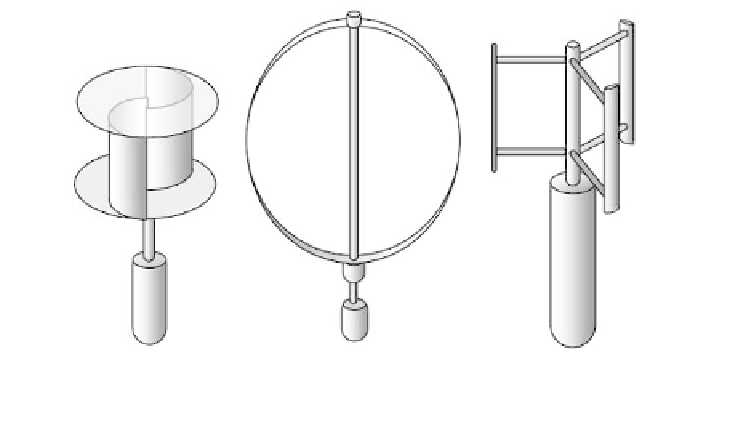Environmental Engineering Reference
In-Depth Information
The coefficients
a
3
to
a
0
can be estimated with programs such as Matlab or
MS-Excel from measurements. Figure 5.10 shows two real power coefficient
curves and their
approximation by third-degree polynomials
. Table 5.6 shows
the parameters of both curves.
W
IND
T
URBINE
D
ESIGN
The previous section explained in general how drag and lift devices can utilize
wind power. This section describes technical solutions for this utilization. In
the past, wind energy was mainly converted to mechanical energy; some
modern wind pumping systems also use the mechanical energy directly.
However, today the generation of electricity is in higher demand; therefore,
a wind rotor drives an electrical generator. Different concepts exist for the
rotor design and are explained in the following sections.
Wind turbines with vertical rotor axis
Wind wheels and windmills with vertical axes are the oldest systems to exploit
the wind. For more than 1000 years drag devices with vertical axes have been
constructed. Today there are some modern wind generator concepts that also
have vertical axes as shown in Figure 5.11.
Rotor concepts with vertical axes are:
•
the Savonius rotor
•
the Darrieus rotor and
•
the H rotor.
The
Savonius rotor
works similarly to the above-described cup anemometer,
using the drag principle. It has two semi-cylindrical blades that are open on
Savonius rotor
Darrieus rotor
H rotor
Figure 5.11
Rotors with Vertical Axes


